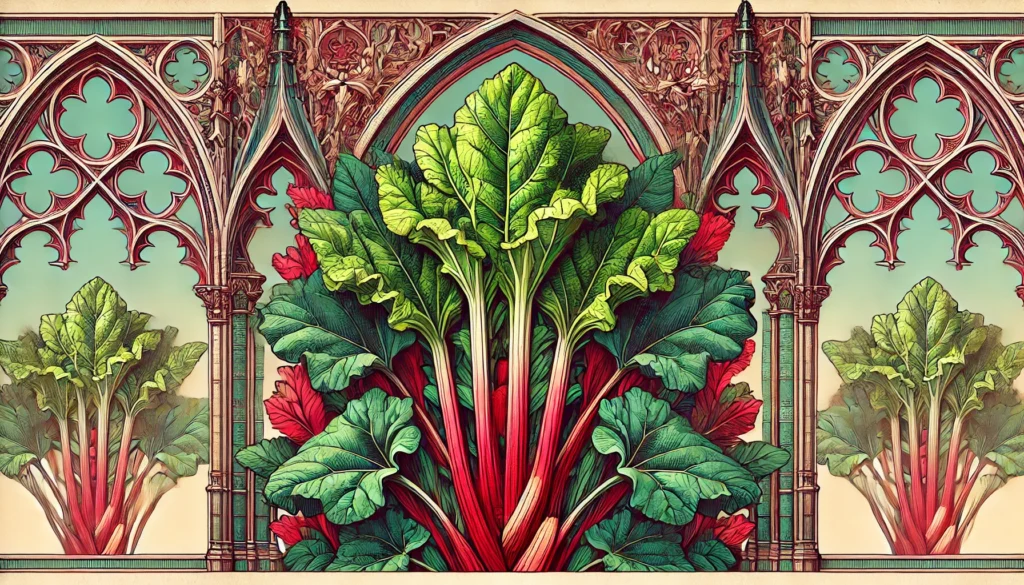

Home » Cat Plants » The Extreme Fatal Toxic Threat of the Rhubarb Plant to Cats

Rhubarb ( Rheum rhabarbarum) is a popular perennial vegetable known for its tart, edible stalks often used in pies and desserts. However, this seemingly harmless plant poses a severe and potentially fatal toxic threat to cats.
Rhubarb plants are commonly found in gardens and can also be grown as ornamental plants in flower beds.
Ingestion may cause mild gastrointestinal upset, but is generally not life-threatening.
Ingestion can result in mild symptoms like vomiting, diarrhea, or drooling. Rarely fatal but may require veterinary care.
Eating these plants can lead to more pronounced symptoms like abdominal pain, lethargy, or difficulty breathing. Veterinary intervention may be necessary.
Ingesting even small amounts can cause severe symptoms like organ damage, seizures, or cardiac failure without rapid treatment.
All parts of these plants are extremely poisonous to cats and can quickly lead to death, even with immediate veterinary care.
** Please note: Please note that toxicity level can vary based on the amount ingested and the specific cat. It's always best to keep these plants completely inaccessible to cats and seek immediate veterinary care or call the poison hotline if you suspect your cat has ingested any part of a toxic plant.
Ingesting any part of the rhubarb plant, especially the leaves, can cause severe symptoms in cats. The leaves contain high concentrations of oxalic acid and soluble oxalate crystals, which are the primary toxic compounds. Symptoms may include:
If you suspect your cat has ingested rhubarb, seek immediate veterinary care. Your veterinarian will likely perform the following steps to diagnose rhubarb toxicity:
Your veterinarian may diagnose your cat with oxalate poisoning, acute kidney injury, or renal failure depending on the severity of the toxicity and the extent of the damage.

A: Rhubarb leaves contain toxic compounds such as oxalic acid, which can be harmful to both humans and animals, including cats. Eating these leaves can cause symptoms like vomiting, diarrhea, and kidney damage, so it’s best to avoid them.
A: Rhubarb is toxic to many animals, including cats, dogs, and horses. The plant contains calcium oxalates, which can cause kidney failure, tremors, and excessive salivation in pets.
A: Although rhubarb stalks are less toxic than the leaves, they can still cause health issues in cats. Ingestion of any part of the rhubarb plant can lead to vomiting, diarrhea, and mouth irritation in felines.
A: Even when cooked, rhubarb remains toxic to cats due to its oxalate content. Cooking does not eliminate the compounds responsible for the plant’s harmful effects on feline health.
A: If your cat eats rhubarb, you should immediately contact a veterinarian. Look out for symptoms such as drooling, vomiting, or kidney-related issues like difficulty urinating or blood in the urine.
A: Burdock is often mistaken for rhubarb due to its similar large leaves, but burdock is generally safer to eat than rhubarb. However, rhubarb’s leaves are the toxic part, whereas burdock leaves are not harmful.
Rhubarb has a long and fascinating history dating back over 5,000 years. Native to the cold regions of Siberia and Mongolia, rhubarb was initially used for medicinal purposes in ancient China. It was traded along the Silk Road and eventually reached Europe in the 14th century.
In the 18th century, rhubarb gained popularity as a culinary plant in Europe and North America. The edible stalks were used to make pies, jams, and other desserts, earning rhubarb the nickname “pie plant.” However, the leaves of the plant remained largely unused due to their toxic properties.
Today, rhubarb is widely cultivated for its edible stalks and is a popular ingredient in many dishes. Despite its culinary uses, it is crucial to remember that all parts of the plant, especially the leaves, are toxic to cats and other animals.
Please note: The information shared in this post is for informational purposes only and should not be considered as veterinary medical advice.
🐾 A hilarious or heart-melting cat video
🐾 Our latest paws-on review of a cool cat toy